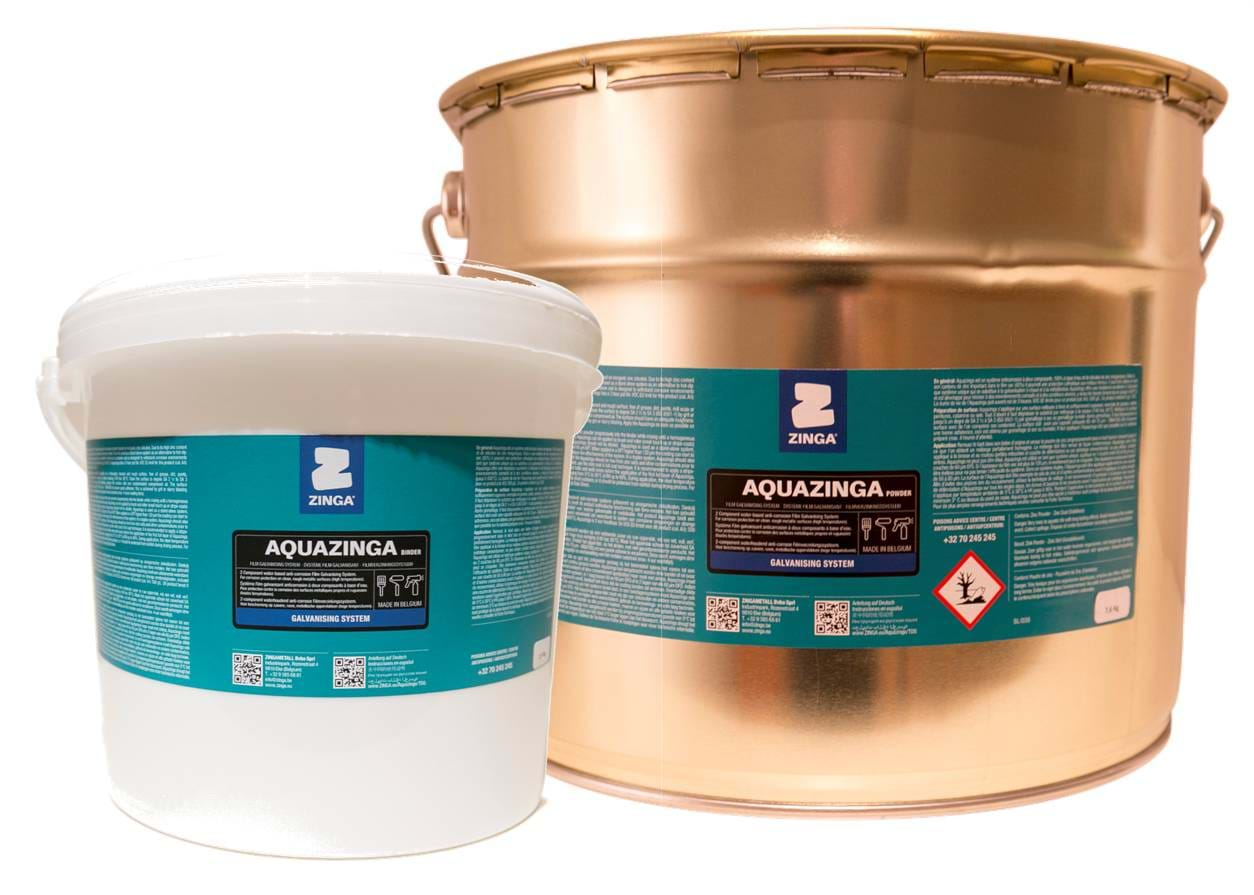Aquazinga is a two-pack,
100% water-based anti-corrosion system. It is based on inorganic zinc silicates and, with its high zinc content (
92% in the dry film), it provides cathodic protection to ferrous metals.
Aquazinga is highly resistant to abrasion and is designed to withstand corrosive environments and severe conditions, including high temperatures (up to
600 degrees C). As a stand-alone system, it can be used as an alternative to hot-dip galvanising and metallisation. It can also be used as a primer under high-heat paints. Typical uses for
Aquazinga include ballast tanks, turbine exhausts and high-heat pipelines.
Aquazinga is available in
25kg tins and cures to a matt grey finish.
Works in constant temperatures up to 600 degrees C.
Is highly resistant to abrasion.
Is highly resistant to steam and other hot gases.
Is highly resistant to hydrocarbons.
Offers high tolerance to thermal shock.
Offers high tolerance to mechanical shock.
Has a high level of conductivity.
Has a Ph range of 5.5 to 12.5.
Works in tandem with sacrificial anodes.
Can be overcoated with a wide range of compatible sealers and topcoats.
It cannot be stressed strongly enough that the key to
AquaZinga long service-life and high corrosion resistance is in the thorough preparation of the steel substrate to the correct specification.
Please always follow the appropriate
Zinga UK specification in conjunction with the relevant
Technical Data Sheets. (TDS) The following information will give a general guide to the coating and its application.
New steel:
1) steam-clean or high-pressure wash-down all surfaces
2) allow to totally dry
3) blast-clean to a cleanliness standard of
Sa 2.5
Note:
a) The steel temperature must always be above
10 degrees C
b) The relative-humidity must be below
70% (or it can start curing at the steel/zinc interface)
c) The relative humidity must be above
40% (or the surface must be sprayed with a water-mist after drying for
10-15 minutes)
Note 1: The term "high pressure" means a minimum water-pressure of
10,000psi. Any pressures below this level will not totally remove engrained chlorides.
Note 2: The grit used on all structural steelwork must obtain a blast-profile range of 50 - 70µm 80µm with a blast roughness factor of
12.5 to 15 microns.
Note 3: UHP Blasting must never be used with
Aquazinga applications, unless it forms the initial stage of preparation followed by grit-blasting.
Note 4: UHPAB (ultra-high pressure abrasive blast) is an excellent form of blast-cleaning for marine structures, as it removes all crustacean growth, scale, engrained chlorides and invisible contaminants.
When using this system, it is very important that the surface-water on the steelwork must be allowed to dry completely before beginning the application of
Aquazinga.
Old steel: The preparation and application technique is identical to that for new steel, but where old marine steelwork is being prepared the water-jetting must use water dosed with
Chlor*Rid, Salt Away or similar low ph chloride remover. This is because the chloride ions are inside the surface of the steel and need to be removed both chemically and under pressure
UNIQUE SYSTEM APPLICATION
When used as a stand-alone system, AquaZinga should be applied in two layers to obtain a maximum thickness (DFT) of 80 µm.
DUPLEX SYSTEM APPLICATION
In the case of duplex system application, a single layer of 50 to 80 µm of AquaZinga should be used. Prior to the application of a topcoat, the surface coated with AquaZinga should be free from zinc salts and other contaminates. A wide range of compatible sealers and topcoats can be applied to AquaZinga.
STRIPE COATING APPLICATION
Before the application of the first full layer of AquaZinga, it is recommended that a stripe coat of AquaZinga is applied to all sharp edges, nuts, bolts and weld areas using a brush.
Please submit a
request for the Materials Safety Data Sheet (MSDS).
| aquazinga-technical-data-sheet.pdf |
|
43 kb |
Download |
